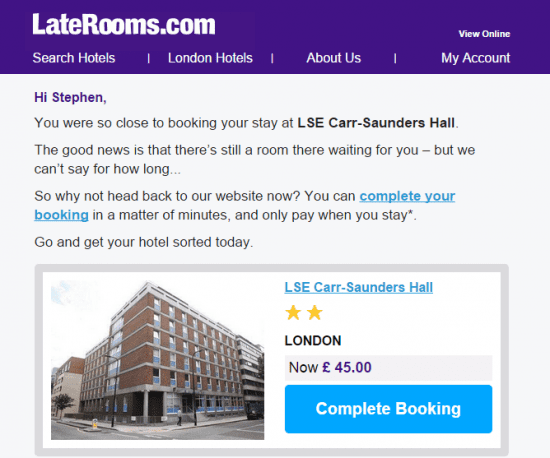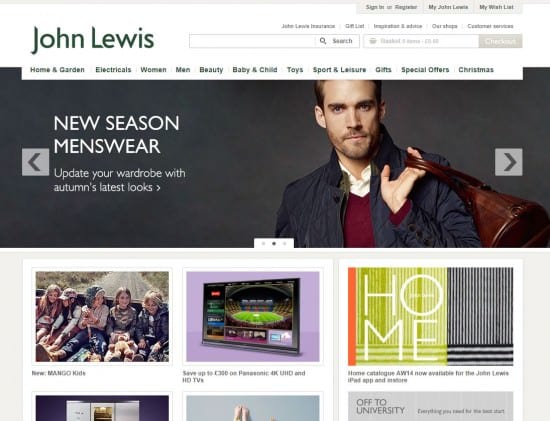Are the myths about deploying web personalisation tools holding you back?
Personalization has been causing major ripples in the digital ocean for many years. Most notably, Amazon pioneered and leveraged the technique in their successful quest for retail domination. Now, they enjoy 30% of their revenue alone through their skilful use of personalized product recommendations. Similarly, whether choosing a movie on Netflix, or flicking through your social media news feed, you'll find personalized content served at every turn.
The benefits are indisputable. Research by Forrester found personalization to be the top priority for 55% of retailers. Similarly, it was found to be this year's top digital priority for B2C marketers. An effective personalization strategy is now widely recognised as essential to reaching the top global levels of conversion.
And it's not just the marketers who agree. Another interesting survey revealed that 83% of consumers themselves want to receive a personalized cross-channel experience.
Yet, despite all of this, a third of marketers don't personalize their websites at all. And of those that do, only a very small percentage are going beyond the very basic techniques.
There's a reason for this; most people simply don't know where to start.
Access resource – Web Personalisation guide
Our E-learning topic will show you
the options for delivering more persuasive, relevant dynamic web content at relevant points in the onsite customer journey for B2B and B2C sites. As well as the techniques and tools available for personalisation based on audience characteristics and behaviour.
Access the
Demystifying Personalization
This is the first of a series of articles in which I will address the thorny issue of why an effective personalization strategy eludes many marketers, and, more importantly, how it can start to work for you.
Below, I will go through some common misconceptions which cause marketers to remain in the personalization slow lane. For each of these I'll provide accompanying suggestions on how to get started - before you get left behind.
-
Myth 1: "Personalization is too time-consuming / expensive"
This is one of the most common myths surrounding personalization. Sure, if you were to build your own visitor profiling tools and content delivery system then you'd unlikely have much time or money for anything else. But today, there is an abundance of real-time personalization tools on the market to help. These apps are simple to use and require minimal effort, yet they will see your conversions rise and your customers return more frequently.
Additionally, many areas of personalization can be automated. Product recommendations engines, for example, are based purely on algorithms, and don't require any maintenance at all, yet can have a huge impact on your sales.
Other features, such as cart abandonment emails can also be automated. 70% of carts are abandoned on retail sites, representing a huge loss in potential revenue. An automated abandoned cart recovery email system however can entice those customers to return to the site to complete their order.
All this automation means your conversions can rise without draining your most precious resource - time.

LateRooms.com have an excellent abandoned cart recovery email, supporting a picture of the abandoned product, engaging text, and a prominent call to action.
-
Myth 2: "Personalization sounds complicated - I don't know where to begin"
Again, a good personalization app will do the hard work for you. As soon as you plug one in, a plethora of invaluable data will be collected on your customers. This would likely include data such as their geographical location, gender and browsing device. E-commerce sites will normally also capture buying history, the content of their cart and product interests, etc.
With all this information at your fingertips, you can then easily segment your visitors based on relevant attributes - for example 'when a visitor is male and expresses an interest in clothing: show men's clothing products'. A few simple segments is all that's needed to get results to begin with, based on characteristics that are meaningful to your business.
Next, you have to decide how to target these visitors. Perhaps an individualised offer? A recent survey of marketers found personalized offers to be the single most effective means of increasing conversions. I will explore other methods in my next article in this series.
-
Myth 3: "I don't have enough content for personalization"
Another myth. Think of the content you already have on your site. Does every customer need to see all of it? Of course not - some parts will be relevant to some customers, others not. In many cases personalization is simply about targeting your existing content more effectively, not creating new material from scratch.

John Lewis show personalized content frequently. The homepage banner I saw on my first visit showed products for women. But after returning from the men's clothing section... hey presto!
Customers are less patient than ever - according to HubSpot, three quarters of online consumers stated they felt frustrated when encountering content irrelevant to their interests online. Customers more than ever are likely to bounce when they struggle to find what they want.
By segmenting your visitors, you can show products, blogs, ads, or offers that are already on your site to match a customer's preferences and tastes. And what does that mean? Increased engagement and conversions, longer average sessions, happier customers.
-
Myth 4: "Personalization is only for the big players like Amazon"
This is a damaging misconception that ultimately results in smaller companies getting left behind.
I have continuously said that personalization should be available to all businesses - not just the behemoths like Amazon. But now, with personalisation services like our own Bunting to help you get started, there is no reason why any marketer, regardless of budget, can't enjoy the benefits of personalization.
To conclude, for the digital marketer, personalization is becoming increasingly more significant. And, with automated tools becoming more available, it is easier than ever to get started with it. For many marketers, personalization is still a nut to be cracked, and this is not helped by common misconceptions. However, by taking steps to implement a suitable tool and start experimenting, the benefits of personalization can be enjoyed without forceful demands on time and budget.
In the next article in this series I will delve deeper into how marketers can take practical steps to implement personalization and reap the rewards it brings.









